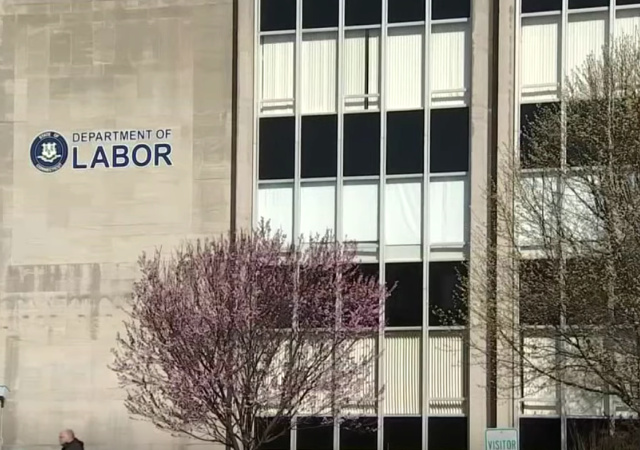Unemployment Claims Hit 853,000 Last Week in the Wake of New Lockdowns
“Many workers laid off this spring expected to return to their jobs fairly quickly. Those laid off in recent weeks are more likely to have seen their position eliminated.”

The U.S. unemployment claims last week went up by 137,000 from the previous week to 853,000.
Continuing claims, which saw a decreasing pattern, increased by 230,000 to 5.76 million.
Experts expected 730,000 claims:
This was the highest weekly total since Sept. 19 and reflects the job market’s struggles lately as coronavirus cases have spiked and local and state governments have imposed restrictions on some activities.
Continuing claims increased by 230,000 to 5.76 million, the first time that number has gone up since late August.
Markets reacted little to the news, with Wall Street indicating a slightly lower open for stocks.
The rise in virus cases has put substantial pressure on the labor market, with nonfarm payrolls increasing just 245,000 in November after rising 610,000 in October.
Those difficulties were reflected further in unadjusted jobless claims, which totaled 947,504, a 31.9% increase from the previous week. Seasonal factors were pointing to a 12.9% increase, the Labor Department said.
Some states have instilled new lockdowns as COVID-19 cases surge in some cities.
Supply and demand. Andy Challenger at Challenger, Gray & Christmas Inc., stated that new jobs do not mean job destruction has ended. People keep losing their jobs “because demand has not returned.”
Most places, especially restaurants, already faced a harsh winter due to occupancy limits and rules forcing only outdoor dining:
Mr. Challenger said recent layoffs have occurred in the entertainment and leisure industry, including at restaurants, as well as at retailers and in the transportation sector, at employers including airlines and transit authorities. Many workers laid off this spring expected to return to their jobs fairly quickly. Those laid off in recent weeks are more likely to have seen their position eliminated, Mr. Challenger said.
“When someone is let go today, that means the company doesn’t see that job existing for a while,” he said.
A few sectors like finance, accounting, and technology sectors have plenty of openings. But Paul McDonald, who works at professional staffing firm Robert Half International Inc., said:
“We’re still seeing strong demand,” he said. “But those with jobs are reluctant to leave.” He said some fear they will lose seniority and be at greater risk for a layoff if the economy weakens. While total job loss this year was much higher than in the 2007-2009 recession, the finance sector has been less affected, and many firms are hiring, Mr. McDonald said, to keep up with demand for mortgage refinancing and home and auto loans.
 DONATE
DONATE
Donations tax deductible
to the full extent allowed by law.









Comments
Referring to the final paragraph and the quote, those office workers will see the bottom drop out of their industry when the last of the people with jobs that are somewhat stable refinance their homes. Next year will be a bear.
.
https://www.nbcnews.com/business/economy/almost-60-percent-business-closures-are-now-permanent-new-yelp-n1240209
What did they expect?
It’s a feature, not a bug.
If the Ds do indeed take control, the wealth gap will widen as more people slide into poverty while Wal-Mart and Amazon continue to enrich themselves.
https://www.cnbc.com/2020/11/27/large-retailers-are-making-record-profits-but-not-paying-workers-more.html
“‘Meanwhile, Amazon and Walmart’s stock prices are up 65% and 41% since the start of the pandemic, adding more than $70 billion to the wealth of Jeff Bezos, Amazon’s CEO, and $45 billion to the Walton family, the country’s richest family, who own more than half of Walmart’s shares,’ the report says.”
So lockdown skeptics are wrong: the lockdowns work! Just not for their officially-advertised purpose.
People have to understand something about the US economy. It is really two parallel economic systems.
On the one hand we have Main Street. Main Street relies upon manufacturing, the sale of manufactured goods and the services which support that. In this portion of the economy, things are produced and actual products are transferred.
On the other hand, we have Wall Street. Wall Street relies upon the transfer of wealth. Whether that wealth actually produces any tangible goods or services, other than the transferring of value, is irrelevant.
In the past, Wall Street and Main Street were linked. This is no longer true. Over the last three decades, Wall Street has been divorcing itself from Main Street. While Main Street relies upon the transfer of tangible goods, to make money and increase value, Wall Street, both investors and brokers, makes money on the transfer of intangible wealth, the value of which is controlled by the “buyers” of the4e wealth infused instruments, who are also, coincidentally, the “sellers” of these same instruments. In other words, while the price of durable goods and the services needed support the creation and transfer of these goods is dependent upon real world need, for these products, the price of financial instruments is controlled by the buyers and sellers based solely upon how much profit they can make based upon the increase or decrease in thee future value of these instrument; which they actually control themselves. And, the evidence that financial markets are controlled by the investors within those markets is overwhelming. If Wall Street was still linked to the fortunes of Main Street, then the financial markets would have collapsed months ago, not skyrocketed to record highs.